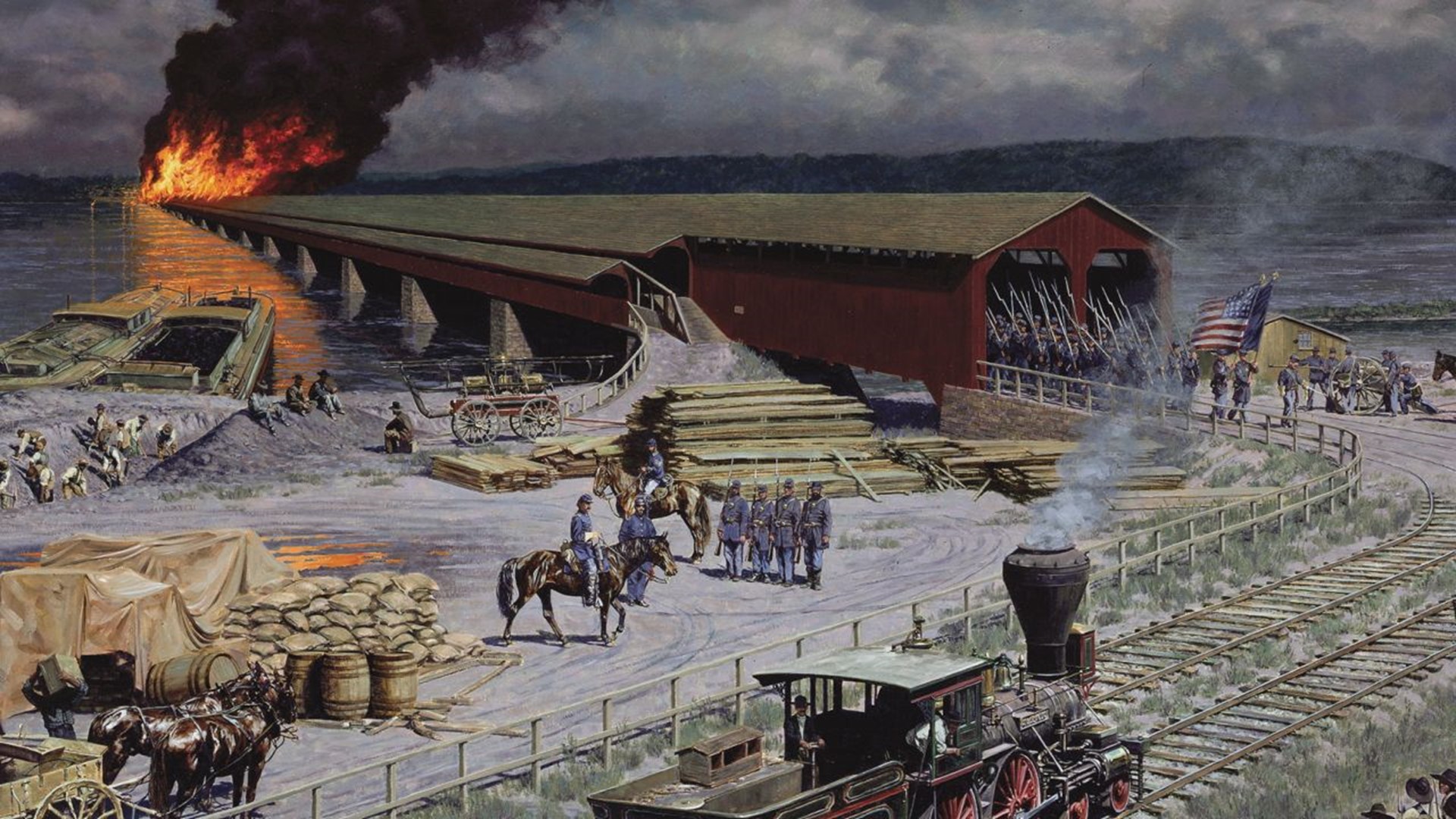WRIGHTSVILLE, Pa. — In hopes that they could bring President Abraham Lincoln to the negotiating table, Robert E. Lee's Confederates moved into south central Pennsylvania in late June of 1863.
On Sunday, June 28, 1,800 of them were moving towards Wrightsville. The Susquehanna River was one thing standing between them and Lancaster County or Harrisburg.
"The Bridge of Wrightsville was—at the time—the largest covered bridge in the world," recalled author Scott Mingus. "It was 40 feet wide, it had railroad tracks going through it. It had the highway, of course, the turnpike if you will, that led from Philadelphia to Pittsburgh. On the south side of the bridge was an addition for the canal."
Mingus has written 34 total books on the Civil War and the Underground Railroad. This includes "Flames Beyond Gettysburg: The Confederate Expedition to the Susquehanna River, June 1863.'"
"On June 23rd, General Richard Ewell, on orders from Robert E. Lee, sent a message to his subordinates that they were to capture Harrisburg if it was to come within their means," said Mingus. "That's all we really know about Lee's intentions, is the fact that if it comes within your means. It doesn't necessarily sound like he really wanted to attack Harrisburg, but if you read between the lines, he did."
As the Confederates approached, there was a stark difference between them and the forces that were set to defend Wrightsville and the bridge.
"These were battle-tested men. Most of them had been involved in the war since the beginning. They fought numerous battles under Robert E. Lee. They've been victorious in almost every battle," stated Mingus. "Most of the defenders of Wrightsville were either discharged veterans of the Union Army, whose terms of enlistments had expired, so they had some combat experience. But, most of the defenders were militiamen and coal miners. A lot of them were from the Wilkes-Barre, Schuylkill County area. A lot of them didn't have that much experience. They were joined by 57 free African Americans who worked at the rolling mill in Columbia. These guys were given guns, so they had civilians fighting as well. So it was kind of a motley group. The Confederate general in charge decided that the militia was so bad, or so 'utterly inefficient' in his words, that he could just grab the bridge, march his men into Lancaster County, and he himself would march on from Lancaster County onto Harrisburg's undefended rear."
The Burning of the Bridge Diorama in Wrightsville shows the setup of both sides. After over an hour of fighting, it became clear which way the skirmish was heading, and the defending forces raced back across the bridge, where four men waited to light the fuses that would blow up part of the bridge to stop Rebels from crossing.
"They did that, but this was a very sturdy bridge. All it did was put a hole in the walls and the ceiling. The bridge was still intact. The third resort was to burn the thing," Mingus said.
A full Interview with Scott Mingus can be found in the video above.
As the flames grew, the Confederates needed to put out the fire if they had any hopes of crossing the river.
"So they went through all these different houses throughout Wrightsville. They were looking for dish pans and buckets and pales," said Mingus. "They were actually looking for the fire truck, but the fire pumper was across the river in Columbia. The citizens of Wrightsville had no buckets, so they said."
But when the wind shifted and blew embers back towards Wrightsville, catching businesses and houses on fire, suddenly everyone in town remembered where they put their buckets and pales.
After six hours, the bridge completely burned into the Susquehanna, and with it went the Confederates' hopes of advancing into Lancaster County. But their work in Wrightsville wasn't done.
"General Gordon, who was the commander of the troops in Wrightsville itself, he's a subordinate to General Early, commanded the Georgia brigade," Mingus recalled. "He ordered his men to form a bucket brigade from the canal of the Susquehanna River, and they actually passed water uphill and then people were standing on the roofs to try and save as much of the town as possible."
On the morning of the 29th, the Confederates left and headed back towards Gettysburg, but there was plenty to take away from Wrightsville.
"One, the 57 African Americans that fought there, again they're civilians not in uniforms, proved that they could fight," said Mingus. "So the Union authorities in Harrisburg and in Washington D.C. realized that Black people could be very good soldiers. Later that summer, they formed the United States Colored Troops. Another consequence was the Confederates' confidence level was still so high that two days later when they fought at Gettysburg, in a lot of ways, they thought it was going to be an instant replay. That they would roll over the state militia and take the ground easily. They found out to their shock and horror that this wasn't the Pennsylvania State Militia, this was now the Army of the Potomac at Gettysburg."
You can find additional information on the burning of the Wrightsville Bridge in the following resources:
- Scott Mingus' books
- Visiting the Burning of the Bridge Diorama
- Visiting the Wrightsville Historical Museum


